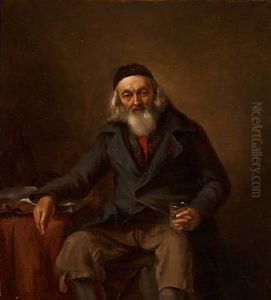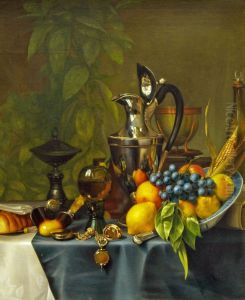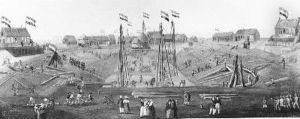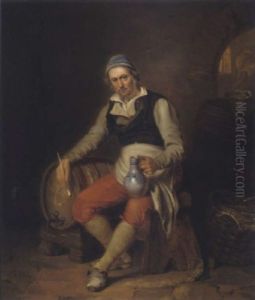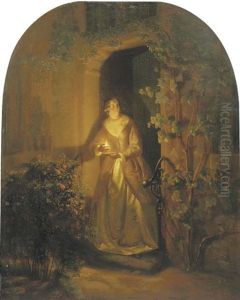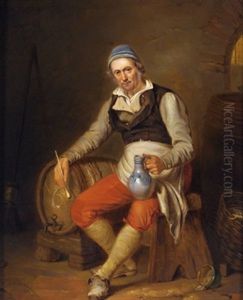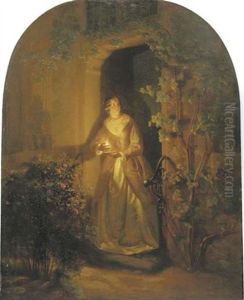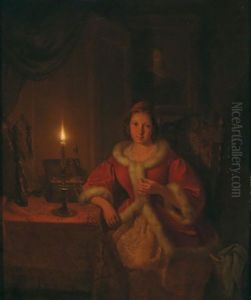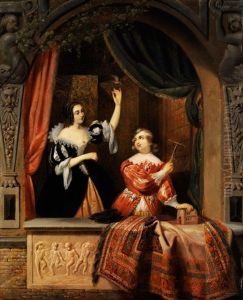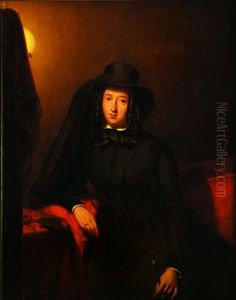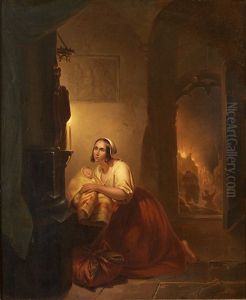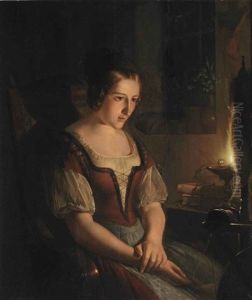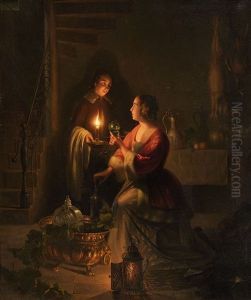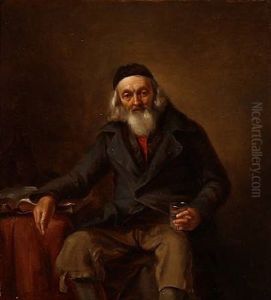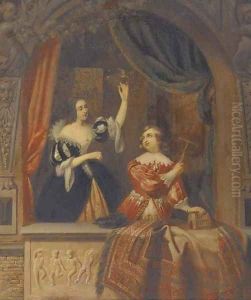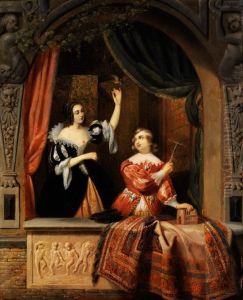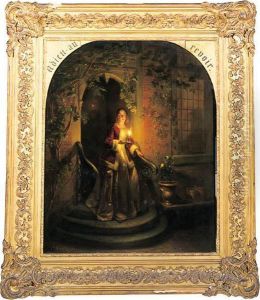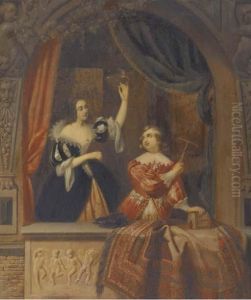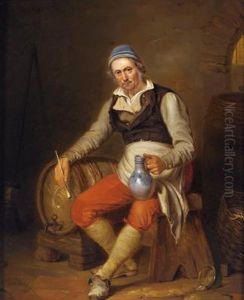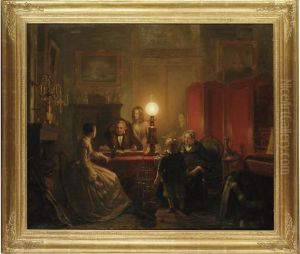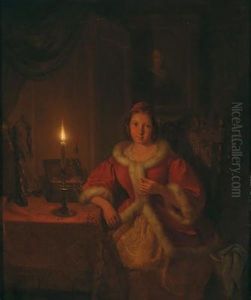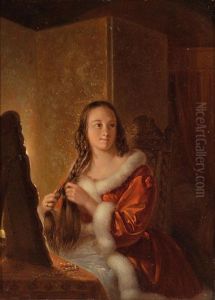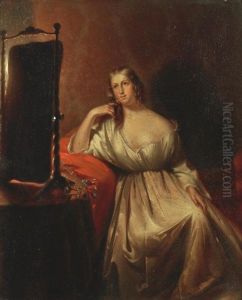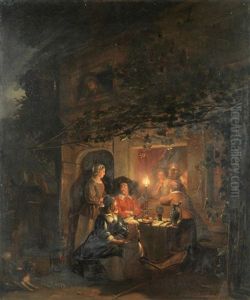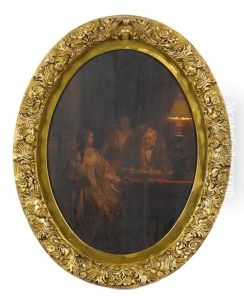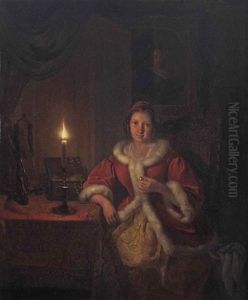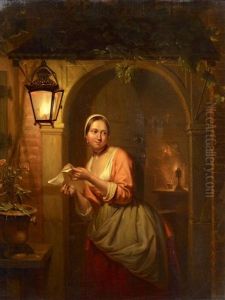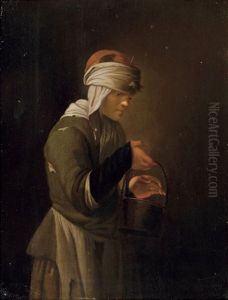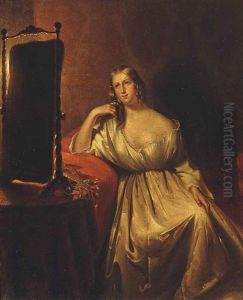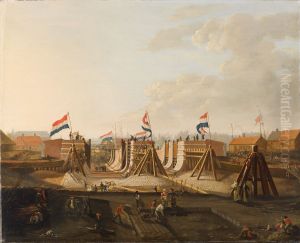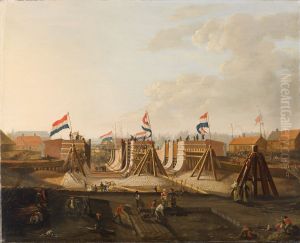Petrus Kiers Paintings
Petrus Kiers was a Dutch painter, primarily known for his works as a portraitist and genre painter. Born on January 22, 1807, in Meppel, Netherlands, Kiers grew into the Dutch artistic world during a period known for a resurgence of interest in domestic themes and fine detail, a movement often referred to as the Dutch Romantic School.
Kiers received his initial training in art at the Drawing Academy in Amsterdam, where he was taught by Jean Augustin Daiwaille, a respected portraitist of his time. Under Daiwaille’s tutelage, Kiers honed his skills in capturing the human likeness and the subtleties of facial expressions, which would later become a hallmark of his portraits.
The artist's career was predominantly based in Amsterdam, where he established himself as a successful and sought-after portraitist. Kiers’ portraits are characterized by their attention to detail, careful rendering of textures, and the warm, often subdued, lighting. His ability to capture the social status and personality of his sitters made him popular among the bourgeoisie, who were keen to commission works that would both immortalize them and reflect their prosperity.
Apart from portraits, Kiers also painted genre scenes, which depicted everyday life with a similar level of detail and an empathetic, sometimes anecdotal, approach. These works often featured interiors with figures engaged in daily activities, showcasing the artist’s skill in composition and narrative. Kiers' genre paintings have been noted for their lively character and the interplay of light and shadow, reflecting the influence of the 17th-century Dutch masters whom he admired.
Throughout his career, Kiers exhibited his work in various exhibitions, including those held by the Royal Academy of Fine Arts in Amsterdam. His paintings were well received, and he earned a respectable place among Dutch artists of the 19th century.
Petrus Kiers passed away on October 24, 1875, in Amsterdam. Though he may not be as widely recognized as some of his contemporaries, Kiers' work remains an important part of the Dutch Romantic tradition, offering a window into the social and cultural life of the Netherlands during his time. His portraits and genre scenes continue to be appreciated for their technical skill and their charming representation of 19th-century Dutch society.
